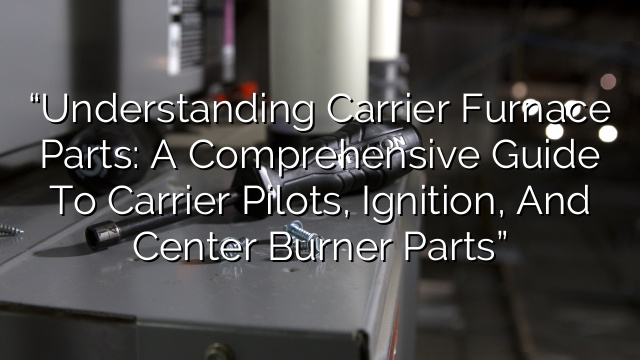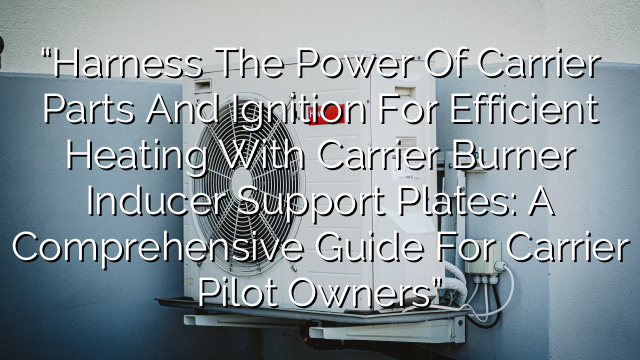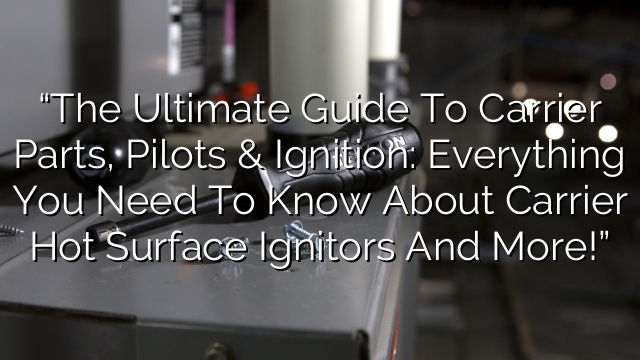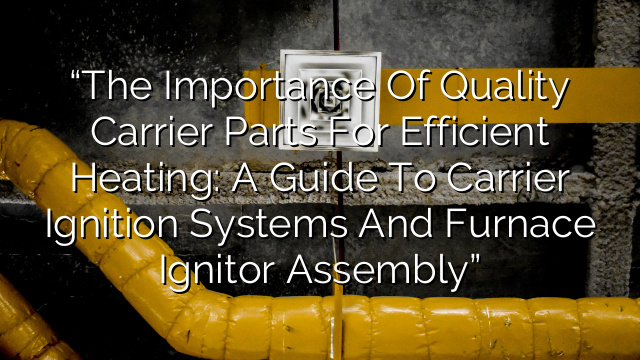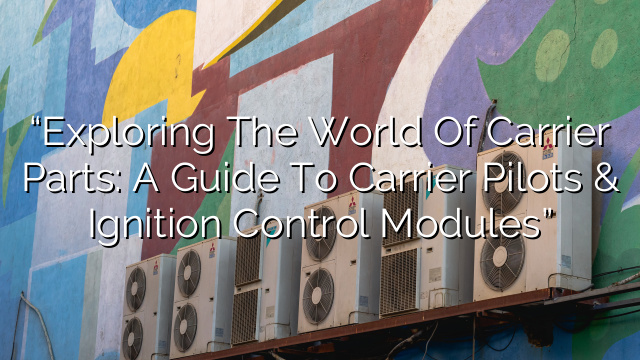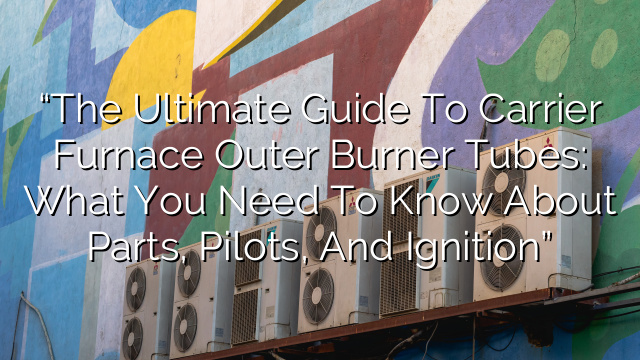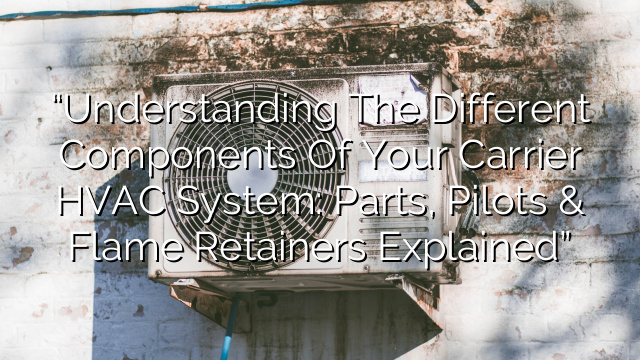Introduction
Welcome to “The Ultimate Guide to Carrier Parts, Carrier Pilots & Ignition, and Carrier Burner Furnace.” In this guide, we will explore the various components of Carrier HVAC systems and provide you with important information about their functionality and maintenance. Whether you are a homeowner or a HVAC technician, this guide will help you understand the inner workings of these essential components.
Carrier Parts
Carrier HVAC systems are known for their durability and reliability, but like any other mechanical system, they are subject to wear and tear over time. When a Carrier system requires repair or replacement, it is crucial to choose genuine Carrier parts to ensure optimal performance and longevity.
Carrier offers a wide range of parts for their HVAC systems, including filters, coils, motors, capacitors, and control boards. These parts are designed to fit perfectly into Carrier units and are rigorously tested to meet the highest standards of quality and performance.
When purchasing Carrier parts, it is essential to consult the model number of your system to ensure compatibility. Each Carrier unit has a unique model number, and using the wrong parts may damage the system or void the warranty. If you are unsure about the compatibility or installation process, it is best to consult a professional HVAC technician.
Carrier Pilots & Ignition
The pilot and ignition systems play a crucial role in the operation of Carrier furnaces. The pilot light is a small flame that ignites the burner whenever heat is needed. It is continuously burning, ready to ignite the main burner when necessary.
Carrier offers both standing pilot and electronic ignition systems. A standing pilot system uses a small gas flame to ignite the burners, while an electronic ignition system uses electronic components to initiate the ignition process. Both systems have their advantages and are used in different Carrier furnace models.
If your Carrier furnace has a standing pilot system, it is essential to keep the pilot light clean and properly adjusted. A weak or inconsistent pilot flame can cause the furnace to malfunction or fail to heat your home adequately. Regular maintenance, such as cleaning the pilot orifice and adjusting the flame, can help prevent issues and ensure optimal performance.
For furnaces with electronic ignition systems, it is crucial to ensure that the ignition control module is functioning correctly. If the electronic ignition fails, the furnace may not ignite, leaving you without heat during the cold winter months. Regular maintenance and occasional replacement of the ignition control module can help prevent such issues.
Carrier Burner Furnace
The burner is the heart of a Carrier furnace, responsible for generating heat by burning fuel. Carrier burners are designed to provide efficient and reliable heating, ensuring your home stays warm and comfortable.
Carrier offers a range of burner options, including single-stage, two-stage, and modulating burners. Single-stage burners operate at full capacity whenever heat is required, while two-stage burners allow for more precise temperature control by adjusting the flame intensity. Modulating burners provide the most precise temperature control by continuously adjusting the flame to match the heating needs, resulting in enhanced energy efficiency and comfort.
Regular maintenance of the burner is essential to ensure optimal performance and reduce the risk of malfunctions. It is recommended to clean the burner and inspect it for any signs of damage or wear. Additionally, checking the flame color and pattern can help identify potential issues with the combustion process.
FAQs
1. Can I use aftermarket parts for my Carrier HVAC system?
While aftermarket parts may be cheaper, they are not recommended for use with Carrier HVAC systems. Genuine Carrier parts are specifically designed for compatibility and performance, ensuring the optimal functioning of your system. Using aftermarket parts may result in subpar performance, increased energy consumption, and potential damage to the system.
2. How often should I clean the pilot orifice?
The frequency of cleaning the pilot orifice depends on the specific conditions of your home and the quality of the gas supply. In general, it is a good practice to clean the pilot orifice at least once a year. However, if you notice any issues with the pilot flame, such as flickering or an inconsistent size, it is recommended to clean the orifice and adjust the flame promptly.
3. Can I convert my standing pilot furnace to an electronic ignition system?
In most cases, it is possible to convert a standing pilot furnace to an electronic ignition system; however, it is a complex process that should only be performed by a professional HVAC technician. The conversion requires specific parts and thorough knowledge of the furnace’s electrical and gas connections.
4. Is it worth upgrading to a modulating burner?
If you prioritize precise temperature control, energy efficiency, and enhanced comfort, upgrading to a modulating burner can be a worthwhile investment. Modulating burners continuously adjust the flame intensity to match the heating needs, resulting in reduced energy consumption and a more consistent indoor temperature.
5. How often should I schedule maintenance for my Carrier furnace?
It is recommended to schedule annual maintenance for your Carrier furnace. Regular maintenance helps identify potential issues before they escalate, ensures optimal performance, and prolongs the lifespan of the system. It is best to consult a professional HVAC technician to perform the necessary inspections and maintenance tasks.
Remember, proper maintenance and using genuine Carrier parts are crucial for the optimal performance and longevity of your Carrier HVAC system. If you have any questions or concerns about Carrier parts, pilots and ignition, or burner furnace, it is best to consult a professional HVAC technician who is knowledgeable about Carrier systems.


